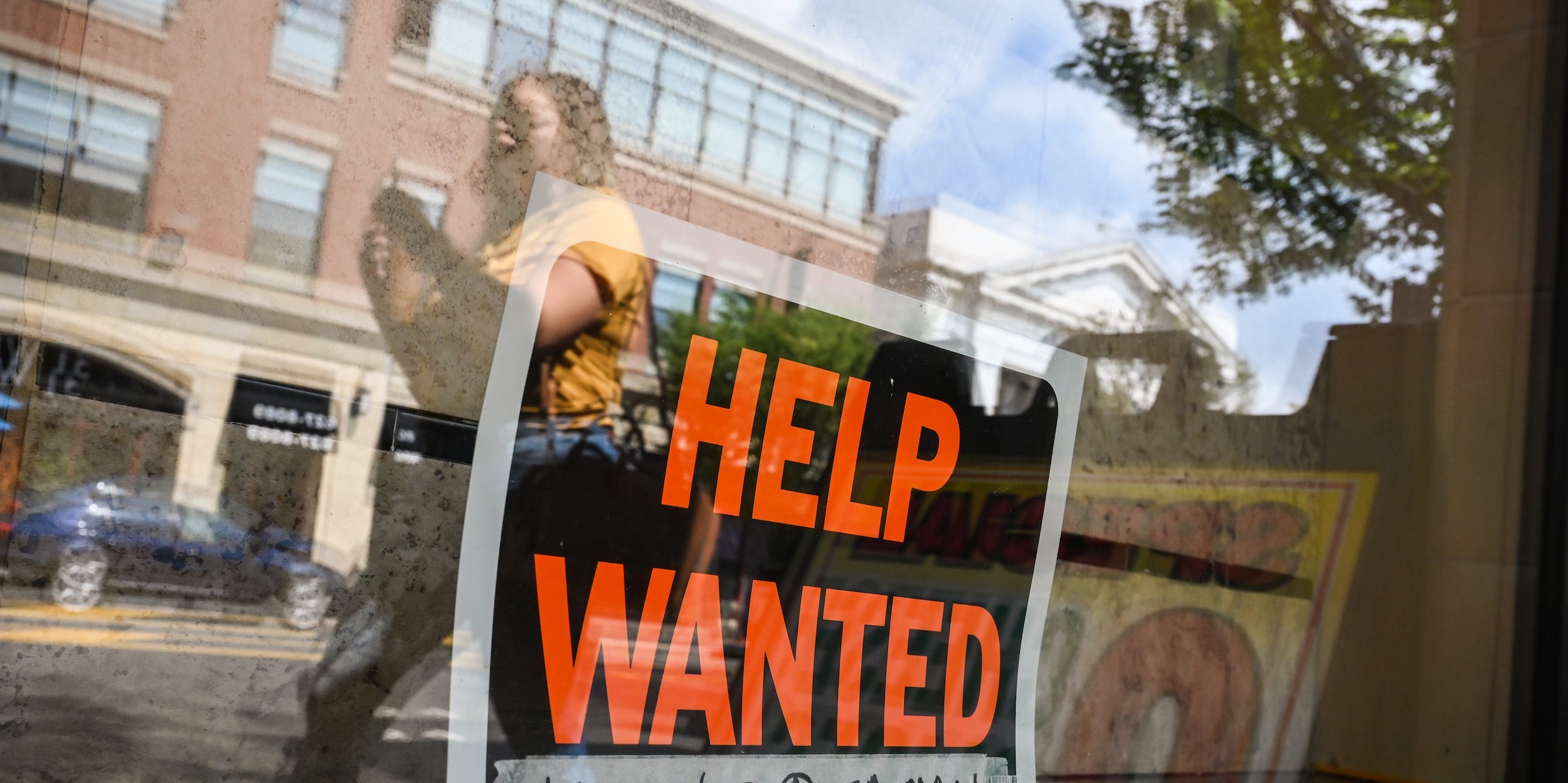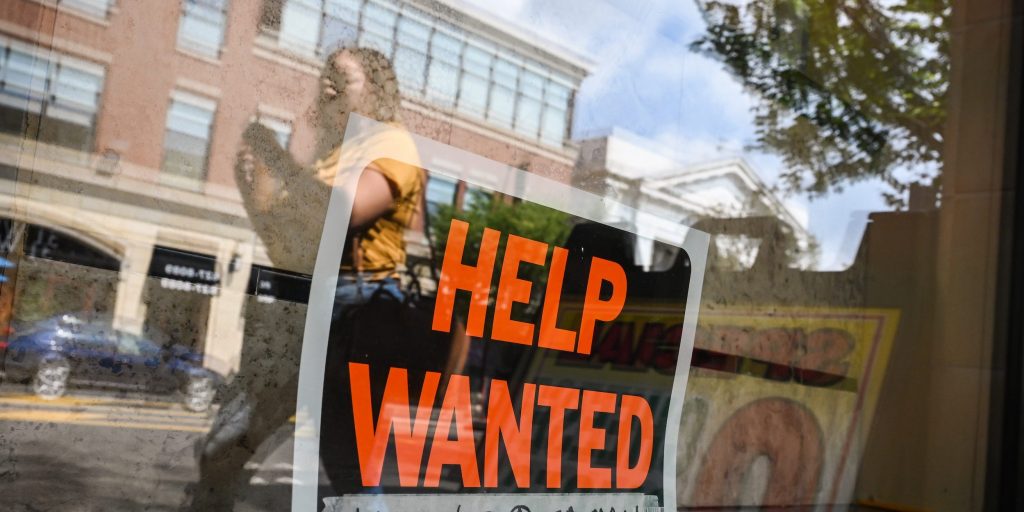
Steve Pfost/Newsday RM/Getty Images
- The housing crisis and the labor shortage are linked. Fighting the former could help solve the latter.
- Numerous studies show that affordable housing improves job growth, while expensive housing can damage local economies.
- Investing in underserved neighborhoods and creating affordable housing in cities can boost hiring across the US.
San Francisco could learn something from Columbus, Ohio.
It's a fairly simple concept: Though the Bay Area boasts abundant jobs, housing for the people to fill those jobs isn't affordable. In Columbus, however, affordable housing can be found within a reasonable distance from the city's largest job hubs.
San Francisco's problem reveals the link between the housing crisis and the labor shortage. Columbus's planning hints at a solution for both.
Across the US, businesses are struggling to fill job openings. The trend, now known as the "labor shortage," has changed the game for employers and employees. Americans are flexing unprecedented bargaining power and demanding higher pay to return to work. Those with jobs are quitting at record pace for new opportunities, hoping to capitalize on the overwhelming demand for workers.
It's working. Average wages have risen at the fastest pace in decades as firms scramble to rehire. Yet the shortage shows no signs of calming. More than 10 million job openings remained unfilled at the end of August, signaling the return to full employment will take some time.
At the same time, the US housing market is still white-hot. A shortage of available homes has led to frenetic bidding wars and the fastest price growth in 45 years. More houses are on the market than during pandemic lows, but it's still well below what experts estimate is needed to meet demand.
The shortages are two sides of the same coin. Cities with the most job openings don't have the affordable housing needed by many workers. And areas with cheaper housing don't have the promising labor markets to make them attractive.
Fixing the housing market could be the best bet for fighting the labor shortage.
Housing and employment are fundamental to the American Dream
The gap between affordable housing and job access already has a name: spatial mismatch. The trend has been studied for years, but the pandemic's effects on the labor market brought the term back into the limelight.
It also describes where San Francisco can learn from Columbus. A 2019 study by the Urban Institute found that, while the San Francisco Bay Area had an overabundance of job openings, there weren't enough job seekers within a reasonable distance to fill them. It wasn't until one looked far into the Bay Area's surrounding neighborhoods that openings matched available workers. But that had more to do with fewer postings than more applicants.
The landscape is different in Columbus. While the city had more open job than people seeking work, those jobless people tended to at least live within a reasonable distance to work hubs. By creating affordable housing and placing it near transit, Columbus was able to connect low-income residents with employment opportunities.
Similar effects can help close spacial mismatches throughout the US, Christina Stacy, a principal research associate at the Urban Institute, told Insider.
"People need safe, stable, affordable housing in high-opportunity neighborhoods in order to have any upward economic mobility. Certainly having affordable housing near jobs will help us get there," she said.
The equation works the other way around, too. Unaffordable housing poses "significant negative effects" on local employment growth, researchers at the Federal Reserve Bank of Boston said in a 2010 paper.
For example, California cities suffer a two percentage-point drop in employment growth for every one-unit increase in the Fed's housing affordability ratio (higher ratios mean worse affordability). Metropolitan areas and counties faced 10-point drops in job growth for every one-unit increase. Despite varied housing markets across the country, the results "turn out to be remarkably consistent," the team said.
Even housing uncertainty can harm local job markets. A survey of nearly 700 Milwaukee workers showed that experiencing a forced move increased the likelihood of losing work by up to 22 percentage points, according to a 2016 study by Harvard University researchers.
Improving housing affordability doesn't just lift job growth; It keeps workers from losing the jobs they have.
Moving people to jobs and bringing jobs to the people
Cities have long offered the best job prospects, while poorer and less densely populated areas have been left by the wayside. The effect snowballed through much of the post-war period as home prices rose, low-income Americans were forced out, and wealthier workers brought fresh investment to gentrified neighborhoods.
The pandemic widened the gap even further. Home prices have skyrocketed through 2021 as a broad housing shortage fueled bidding wars across the US. The price surge was most intense in the most populous areas, making job hubs even less accessible to low-income workers.
Only eight states - including California, New York, and Hawaii - had more unemployed workers than job openings at the end of August, the Bureau of Labor Statistics said Friday. The remaining states had far more job openings than workers to fill them, the defining characteristic behind the country's labor shortage.
The solution must be two-pronged, the Urban Institute's Stacy said. City governments can leverage pandemic-era aid to create and preserve affordable housing. Transportation options like buses and train stops can connect affordable neighborhoods to job opportunities. And renter protections can stave off gentrification and ensure neighborhoods remain accessible.
"As we do invest in under-invested neighborhoods, we need to get in there and preserve affordable housing," Stacy said. "Otherwise you're just shifting people around and it's not really helping with equity or reducing poverty."
On the other end of the spectrum, governments can draw jobs to areas where homes are affordable. Policies like the New Markets Tax Credit and Opportunity Zone tax incentives can attract private businesses to affordable areas, she said. Governments can also stimulate employment directly through workforce training programs and public-sector jobs.
"The answer to all of this is that we have attack everything by every angle," Stacy said. "This is a great opportunity point to be rethinking this and responding to all these demographic shifts."
